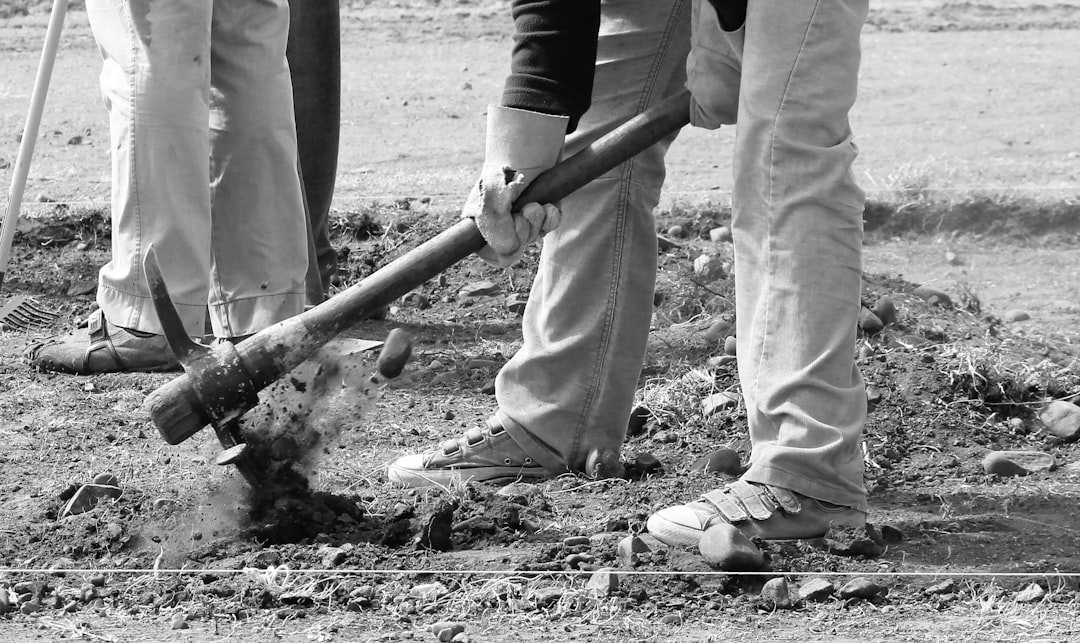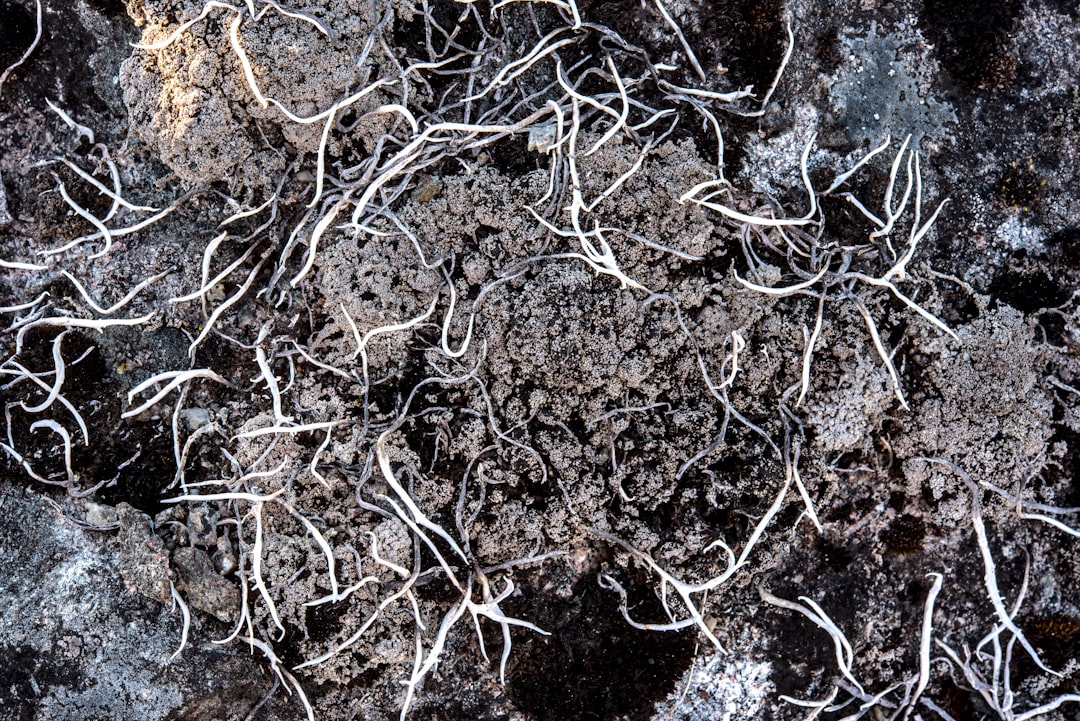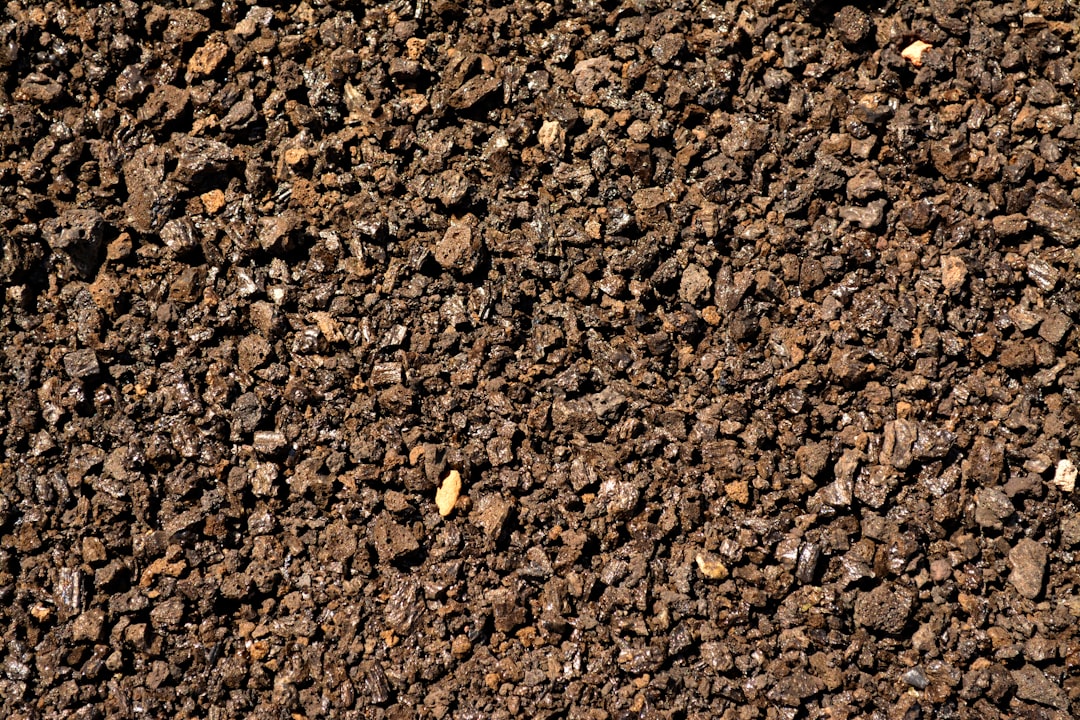

Engage prospects with a scan and streamline customer engagement with FREE QR code marketing tools by Sona – no strings attached!
Create a Free QR CodeFree consultation

No commitment

Engage prospects with a scan and streamline customer engagement with FREE QR code marketing tools by Sona – no strings attached!
Create a Free QR CodeFree consultation

No commitment
Soil solidification contractors face unique challenges when bridging the gap between fieldwork and digital engagement. In the daily realities of contaminated soil treatment, soil remediation services, and maintaining stringent environmental compliance, contractors often miss out on high-value leads because critical touchpoints are not tracked or timely information is not captured. This can result in missed opportunities and inefficiencies that have real business consequences.
In today’s data-driven environment, QR codes in marketing have become a strategic asset for soil solidification contractors, directly addressing these persistent barriers. By offering an instant, app-free bridge from physical sites and printed materials to robust digital experiences, QR codes enable teams to surface compliance records the moment an inspector requests them and share case studies directly from field signage. QR codes also capture new business inquiries instantly, ensuring no valuable engagement slips through the cracks.
This article explores how QR codes, when thoughtfully implemented, can resolve long-standing industry pain points such as lost leads, missed engagement signals, and inefficient project documentation. Learn practical next steps, discover proven best practices, and see how leading contractors leverage advanced QR code solutions to unify project data, streamline contractor-client communication, and accelerate business growth while meeting the rigorous demands of environmental and industrial service delivery.

Operational bottlenecks in soil stabilization often stem from analog processes. Paper safety manuals get outdated, binders with ASTM and EPA references sit in trucks instead of being consulted, and client inquiries at sites or trade shows rarely make it into the CRM. QR codes convert these offline interactions into measurable digital actions. A single scan can load a mobile-ready SOP, open a dynamic project page with live data, or initiate a pre-filled service request form that routes directly to your operations team.
Replacing printed collateral with QR-enabled digital destinations reduces friction and creates traceability. Field supervisors can scan equipment decals to see torque specs or grout mix recipes for a particular soil matrix, while inspectors can validate permits and environmental testing records without waiting for email responses. Prospects who see your signage near a remediation site can request a quote on the spot. The key is to connect the right QR code to each high-value moment and to track every interaction in your analytics and CRM.
Advanced platforms like Sona QR let you generate, manage, and track all codes centrally. You can update destinations without reprinting and capture scan data by site and device. Integrate that data with tools such as HubSpot or Salesforce for greater accountability, faster decision-making, and fewer missed opportunities across your projects.

Soil solidification is a discipline where the stakes are high and the documentation load is heavy. Print-only materials and static signage make it hard to ensure the right audience sees the correct version of critical information at the right time. They also make it nearly impossible to measure interest or follow up with potential buyers. QR codes close these gaps by connecting offline moments to digital experiences that are timely, trackable, and easy to navigate.
Consider two common scenarios. First, a regulator arrives onsite and requests your most recent compaction reports, MSDS, and permits. With a single scan, you can provide access to a secured folder containing the current versions, complete with timestamps and a contact for questions. Second, a project manager from a general contractor sees your stabilization work in progress and wants a budgetary estimate for an upcoming bid. A QR code on the fence line leads them to a short form that captures their project specs and routes to your estimating team. In both cases, the scan removes friction and adds measurable intent data.
For soil solidification contractors, this functionality translates into better compliance hygiene, shorter sales cycles, and higher confidence among regulators and clients. When every scan becomes structured data in your systems, you can prove impact and make smarter decisions.

Different field scenarios demand different QR formats. Selecting the right type ensures that each scan triggers the most useful action. In soil stabilization, the most valuable formats typically point to web resources, forms, and communication shortcuts that shorten response times and reduce errors.
Start by mapping each placement to a user intent. On a safety vest or equipment decal, a QR code should pull up a concise SOP or safety checklist. On a proposal or one-pager at a trade show, it should open a contact capture form or a case study tailored to the audience. For inspectors, it should go directly to version-controlled documentation. Dynamic QR codes are especially useful because they allow you to update content as project conditions change, without altering the printed code.
With Sona QR, you can generate all of these formats, assign them unique tracking parameters, and manage them centrally. That means you can monitor performance by code, switch destinations as needed, and ensure consistent user experiences across every placement.

Growth often hides in plain sight on job sites, in proposal packages, and at industry events. Your crews and equipment are visible to high-value stakeholders, yet interest rarely makes it into your pipeline. QR codes convert these public touchpoints into measurable demand signals by inviting action and logging every interaction.
Think in terms of journey stages and moments that matter. At awareness, your fence banners and vehicle graphics can drive visits to a proof-of-capability landing page. At consideration, your brochures and case studies can connect to technical data, videos, and ROI calculators. At conversion, your proposals and site walk-throughs can route prospects to tailored forms for pricing, site evaluations, or scheduling. Each of these placements can carry unique QR codes that tell you who engaged, where, and when.
Contractors who align QR placements with high-impact decision points consistently see stronger lead capture, faster response times, and better hand-offs between marketing, sales, and operations.

QR codes shine when they remove ambiguity and speed up the flow of information. In soil solidification, several use cases map directly to the daily realities of field work, compliance, and B2B sales. Each one can be tracked and optimized over time, so you learn which placements generate meaningful actions.
A practical approach is to start with a small set of high-value scenarios, then expand once you have a baseline for performance. The use cases below are proven drivers of engagement, trust, and revenue in this vertical.
Modern platforms like Sona QR can integrate these QR-triggered actions with your analytics and CRM workflows. That ensures no opportunity is missed and that safety and compliance engagement is documented in one place.
Every scan is a signal. It carries context like location, timing, and content consumed, which you can use to build audience segments and tailor follow-ups. In a B2B service like soil solidification, buyer roles and project stages vary widely. Segmenting by intent and environment increases relevance and improves conversion rates.
Start by creating distinct QR codes for common scenarios, then map each to a segment. For example, inspectors who scan documentation codes should be handled differently from procurement leads who scan pricing sheets. An environmental consultant at a trade show may want technical depth, while a GC project manager needs scheduling assurance and budget clarity. Use tags in Sona QR and your CRM to keep these streams separate and personalized.
With Sona QR, each code becomes a smart entry point to your funnel. Automated tagging and integrations let you retarget based on behavior rather than assumptions, improving both engagement and win rates.
QR codes unify disparate marketing efforts by making every print or physical asset interactive. For soil solidification contractors, this means your brochures, site signage, direct mail, and event materials do more than inform. They drive immediate action, generate measurable data, and create continuity across channels.
Establish a consistent creative pattern so users know what to expect. Pair each code with a clear call to action, like Scan for compaction results or Scan to request a budgetary estimate. Reinforce your brand with a small logo inside the code frame. Use consistent UTM parameters to attribute traffic by source and medium, then review performance monthly to reallocate spend and improve placements to support multi-touch attribution.
A centralized platform like Sona QR lets you manage codes, monitor performance in one dashboard, and sync scan data with your CRM and ad platforms. The result is a connected offline-to-online funnel that reduces friction for buyers while improving attribution and ROI for your team.
Launching QR initiatives is straightforward when you follow a clear process. Set specific goals, choose the right code type, design for the field environment, deploy across high-impact placements, and measure rigorously. Treat QR campaigns like any other performance initiative, with iteration baked in.
Begin with one or two high-value use cases that address known friction points. For many soil solidification contractors, the best starters are QR-enabled documentation access for inspectors and QR-driven lead capture on proposals or site signage. Once these show traction, roll out additional codes for training, incident reporting, and event engagement.
Select a primary business outcome. Examples include digitizing compliance logs, capturing new business leads from fence line signage, or streamlining visitor tracking at job sites. The tighter the scope, the easier it is to measure and improve.
Match the code format to the desired action. Use dynamic codes for anything that requires tracking, future flexibility, or campaign optimization. Static codes are fine for fixed destinations that will not change.
Field conditions are unpredictable, so prioritize legibility and reliability. Apply your brand colors, add a border, and include a short call to action like Scan for current permits. Test at common distances and angles with multiple devices.
Start where missed engagement is most costly. Typical high-impact placements include project signage, equipment decals, compliance report covers, bid packages, and trade show materials.
Use analytics dashboards to compare conversion rates, trigger automated follow-up, and iterate based on feedback. Review data weekly for active campaigns and monthly for evergreen assets.
Many contractors find that structured QR planning delivers measurable gains in document access speed, lead capture volume, and coordination across teams. As you iterate, codify your best practices so future deployments are faster and more consistent.
Without robust tracking, you cannot tell which touchpoints drive results. QR analytics provide a clear picture from scan to conversion, allowing you to prove impact and optimize spend. For soil solidification contractors, this is especially valuable because many high-intent interactions occur in the field, at events, or through printed proposals.
A strong measurement strategy covers both engagement and outcomes. Start by tracking scan volume and contextual details like location and device. Then connect those scans to downstream actions such as form submissions, consultations scheduled, and opportunities created. Finally, attribute booked revenue to the originating QR interactions so you know which placements and messages are worth scaling.
Sona QR captures real-world engagement, while Sona.com extends that data into buyer journey insights and multi-touch attribution. Together they help you move beyond vanity metrics and link QR activity to tangible outcomes, from faster audits to new contracts won.
Scaling QR-driven value requires a disciplined approach to code management, user education, and automation. The goal is to make scanning the easiest and most obvious path for stakeholders, then to ensure each scan triggers a helpful, measurable action.
As your team adopts QR workflows, reinforce habits that keep data clean and experiences consistent. Mark each code with a descriptive name, maintain a central registry, and avoid reusing codes across different campaigns unless the destination and measurement plan are identical. Small process improvements make a big difference as your library grows.
These practices bridge operational gaps and ensure that QR codes deliver both compliance and growth advantages. As adoption spreads across your organization, you will find new opportunities to simplify workflows and capture value at moments that were previously invisible.
For soil solidification contractors, QR codes are more than a convenience. They are a strategy for project transparency, rapid lead engagement, and robust compliance. By transforming every physical touchpoint into a digital entry point that syncs with your sales and project systems, you reduce risk, capture high-intent interest, and produce measurable business value.
The path forward is straightforward. Start with one or two high-impact use cases, such as QR-enabled documentation access and proposal lead capture. Use a platform like Sona QR to generate dynamic codes, measure performance, and sync data to your CRM. As you iterate, expand to training, incident workflows, and event engagement. The contractors who embrace this connected, data-driven approach are turning field interactions into lasting relationships and revenue. With Sona QR and Sona.com, you can generate, track, and attribute every scan, making QR codes a reliable lever for both operational excellence and growth. Start creating QR codes for free.
QR codes have revolutionized the soil solidification contracting industry by transforming traditional project management and client communication into seamless, data-driven processes. Whether it’s streamlining site access, enhancing real-time reporting, or enabling precise tracking of materials and workflows, QR codes replace cumbersome paperwork with instant, mobile-friendly solutions that boost operational efficiency and client satisfaction. Imagine instantly accessing detailed project data on-site or providing clients with transparent progress updates with a simple scan—making every interaction more productive and trustworthy.
With Sona QR, soil solidification contractors can create dynamic, trackable QR codes in seconds, update project details without reprinting, and link every scan to measurable outcomes such as improved turnaround times and client retention. No more lost information or delayed approvals—just smarter, faster, and more transparent project execution. Start for free with Sona QR today and turn every scan into a step toward streamlined operations and stronger client relationships.
QR codes enable instant access to compliance records, project data, and lead capture, improving engagement, reducing delays, and enhancing compliance and business growth.
Choose contractors who use advanced digital tools like QR codes for real-time documentation access, lead tracking, and compliance management to ensure efficiency and accountability.
Contractors use QR codes linked to dynamic web pages, SOPs, permits, safety checklists, and project dashboards to provide timely and standardized information.
QR codes are inexpensive to deploy at scale and extend the value of existing printed materials by turning them into interactive digital gateways, reducing overall operational costs.
Integrating QR codes streamlines documentation, compliance, and lead management compared to traditional analog methods, resulting in faster audits, better client communication, and increased lead capture.
QR codes provide dynamic, updated access to permits, MSDS, testing reports, and SOPs on-site, reducing errors and delays during inspections and audits.
Dynamic QR codes linking to web pages, forms, contact cards, SMS or email triggers, and Wi-Fi access are most useful for documentation, lead capture, communication, and training.
High-impact placements include project signage, equipment decals, compliance documents, job site entry points, trade show materials, and direct mail to buyers.
Using platforms like Sona QR, contractors can monitor scans by location, time, and device, integrate data into CRMs, and attribute revenue to QR-driven interactions.
Assign unique codes per project and placement, use UTM parameters for attribution, automate follow-ups, train staff on scanning, and test codes in field conditions for reliability.
QR codes on fence banners, vehicles, brochures, and proposals can link to short forms that capture project details and route inquiries directly to estimating or sales teams.
Define use cases, select appropriate QR types, design and test codes for field use, deploy on high-impact assets, and track analytics to optimize performance.
QR codes on equipment and chemical storage open visual SOPs and safety checklists, ensuring consistent on-demand training and quicker inspection responses.
Yes, QR codes on equipment can trigger pre-filled SMS or email orders for parts and materials, reducing downtime and communication errors.
Integration allows automated lead routing, tracking of engagement, personalized follow-ups, and better attribution of revenue to marketing efforts.
Use Sona QR's trackable codes to improve customer acquisition and engagement today.
Create Your FREE Trackable QR Code in SecondsJoin results-focused teams combining Sona Platform automation with advanced Google Ads strategies to scale lead generation

Connect your existing CRM

Free Account Enrichment

No setup fees
No commitment required

Free consultation

Get a custom Google Ads roadmap for your business






Launch campaigns that generate qualified leads in 30 days or less.
